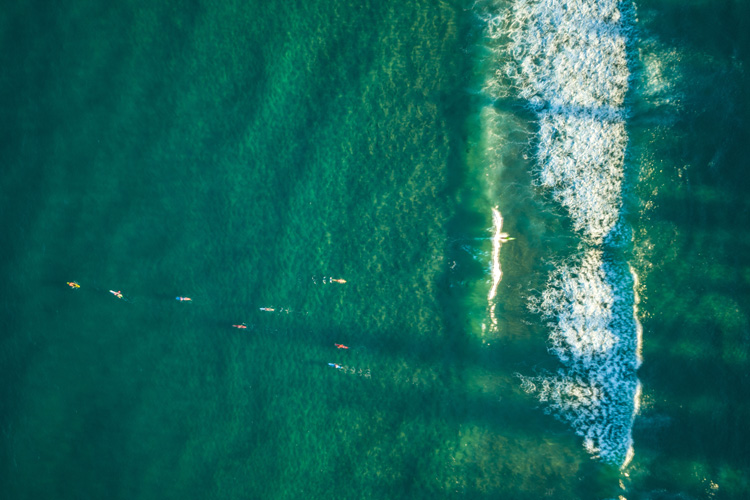Waves, tides, winds, ocean floors, and currents: in surfing, the game of natural variables are always changing. Learning how to triangulate will improve your surfing and the waves you catch.
Triangulation is the art of positioning in the line-up.
Mastering triangulation means knowing where and when to be, whether it's at your local break or in any other spot in the world.
Lining up is basically picking the best take-off spot. Triangulation is a shifting game of adjustment to the wave's main peak.
In other words, there are two variables: you and two other reference points to consider.
Coastal Navigation Techniques Applied to Surfing
Think of triangulation as coastal navigation. Surfers face the beach and check their position in relation to two landmarks.
These can be statues, cliffs, dunes, trees, boats, houses, lifeguard towers, restaurants, or any other static object.
"I memorize how the two points relate to each other - hopefully, one's directly in front of the other. That gives you your left and right line-up in relation to the beach," Mike Parsons writes in "Surfing The Manual: Advanced."
"Then, ideally, you want to find something to help gauge your distance from the beach."
"Keeping your left and right line-up points aligned, look to either side of you and find a landmark."
"Memorize how everything around you looks at that point - it'll give you a reference when you're paddling back out or if a current moves you out of position," concludes Parsons.
If it's not possible to find landmarks, look for something stationary in the water. A large amount of kelp or a submerged rock will do.
Triangulation is all about getting coordinates and drawing imaginary lines between you and two points.
Don't forget to make the necessary adjustments when the tide is pulling out or pushing in.
Triangulation is a critical skill in shifty beach breaks, where sandbars are constantly changing.
Last but not least, observe the ocean and collect information before paddling out.
